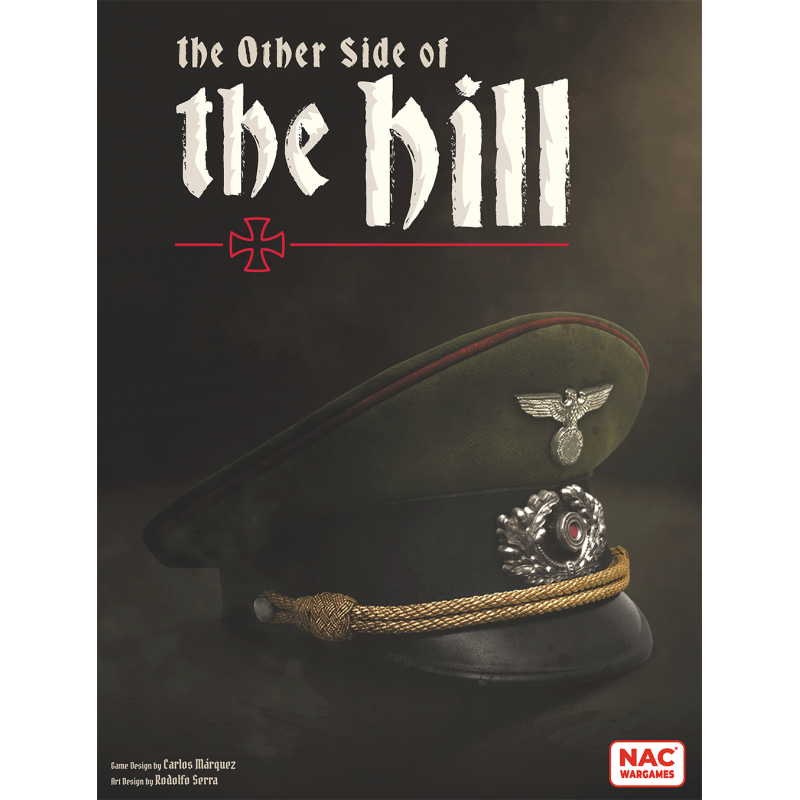

The Other Side of The Hill KS Edition
This is the KS edition of the game, which includes all the Stretch Goals achieved during the campaign, the Generals of Dusk expansion, and a commemorative medal.
The name of the game comes from the book The Other Side of the Hill, published by B.H. Liddell Hart in 1948, based on interviews he conducted with German generals imprisoned after World War II. Much of our understanding of what occurred within the German High Command during the war comes from the more or less self-serving and exculpatory accounts given by the generals themselves in this book.
The Other Side of the Hill is a game for one to four players that can be played in competitive, cooperative, or semi-cooperative mode. The objective is to simulate the course of World War II from the German perspective, as well as the complex power dynamics within the German High Command during the conflict. The longest scenario begins in the autumn of 1939 and ends in the late spring of 1945, unless Germany collapses earlier, and lasts between 12 and 14 hours. Other scenarios with varied durations are available to suit players' preferences or circumstances:
Festung Europa: from summer 1943 until the ASSASSINATION ATTEMPT AGAINST HITLER event card is revealed (3-4 hours)
The competitive mode is the default. Victory in competitive mode is achieved by the player with the most Prestige Points at the end of the game. There are three ways to earn Prestige Points, each reflecting a source of tension within the High Command:
The game follows a strict, repetitive action sequence that provides structure and allows players to automate their procedures: At the start of each year, players earn Prestige Points based on their generals’ positions and the battles they have led. Next, the High Command Section and General cards are distributed. Finally, the OKW Chief selects the Military and Political Directive cards for the year, while the Chief of Production selects the Production Directive cards for the year.
At the start of each season, the Chief of Operations assigns reinforcements to the Wehrmacht, Luftwaffe, and Strategic War, while the Chief of Production reallocates resources according to the war's progression. The Chief of Production can also play Production Directive cards, which deploy forces on the map, increase the Force Pool, or allow the development of Projects that mainly enhance Strategic Warfare. The OKW Chief can then play Political Directive cards, mainly to incorporate new allies into the Axis or increase Fanaticism, the OKW Chief’s main objective. Finally, the OKW Chief plays Military Directive cards, leading to military campaigns during the season.
Each season has a fixed number of Turns: one in winter, two in spring and autumn, and three in summer, for a total of 8 turns per year. Military campaigns take place over these turns. Within each turn, the Chief of Production resolves the Strategic War first, followed by the Chief of Operations moving armies across the map. Battles are then fought: first, those initiated by the Axis under the OKW Chief’s orders, followed by automatic Allied faction battles. At the end of the turn, players check if the Military Directive objectives were achieved, and apply the corresponding effects, whether positive or negative. They also verify if any Axis areas are isolated and the status of garrisons in occupied countries. Lastly, players check for conditions of Automatic Victory or Defeat. Even if Germany collapses before its historical downfall, one player will typically still emerge victorious.
Battles follow a strict sequence: first, the Commanders involved are activated. Then, the number of Allied dice determined by the active Battle card is rolled, which can be modified by certain circumstances, and the number of Axis dice based on the number and type of armies involved, also modifiable. Event cards triggered by the dice rolls are resolved, and the impacts of both sides are compared. An Axis offensive victory results in an advance and possible exploitation, while an Allied victory forces the Axis to suffer casualties or retreat.
The game is played on a 94x60 cm board, which includes a map of Europe and various tables and boxes for managing the game’s different aspects. The map is divided into areas connected by lines, representing countries or regions of Europe, and grouped into three Fronts: West, East, and South.
Data sheet